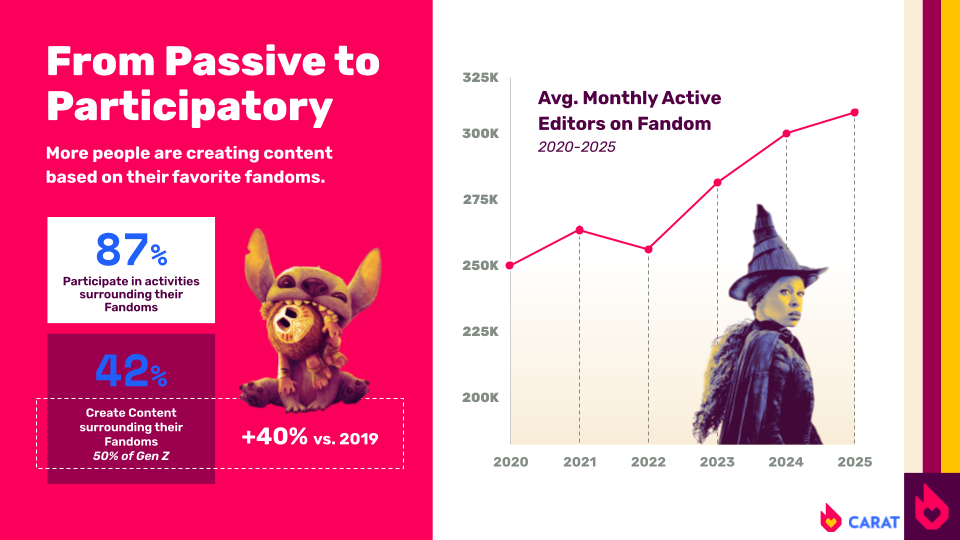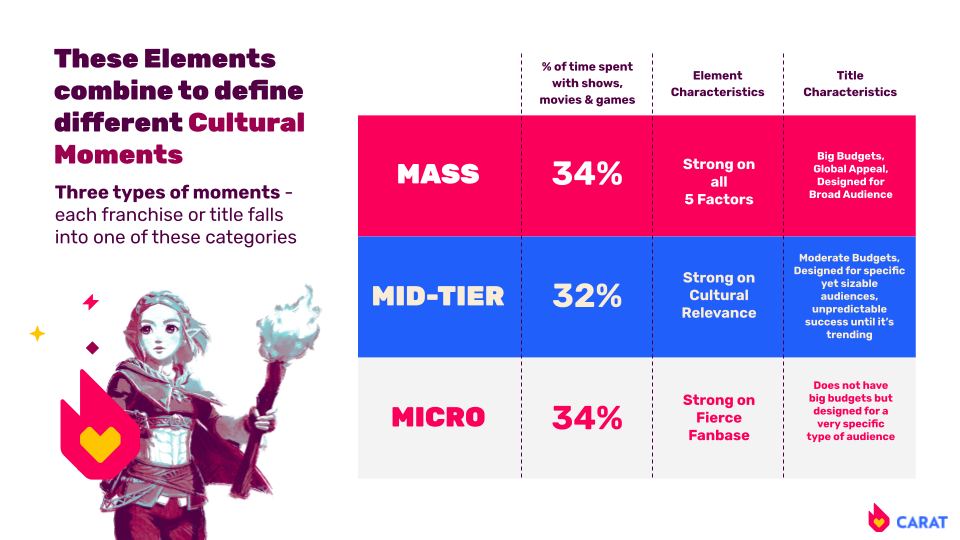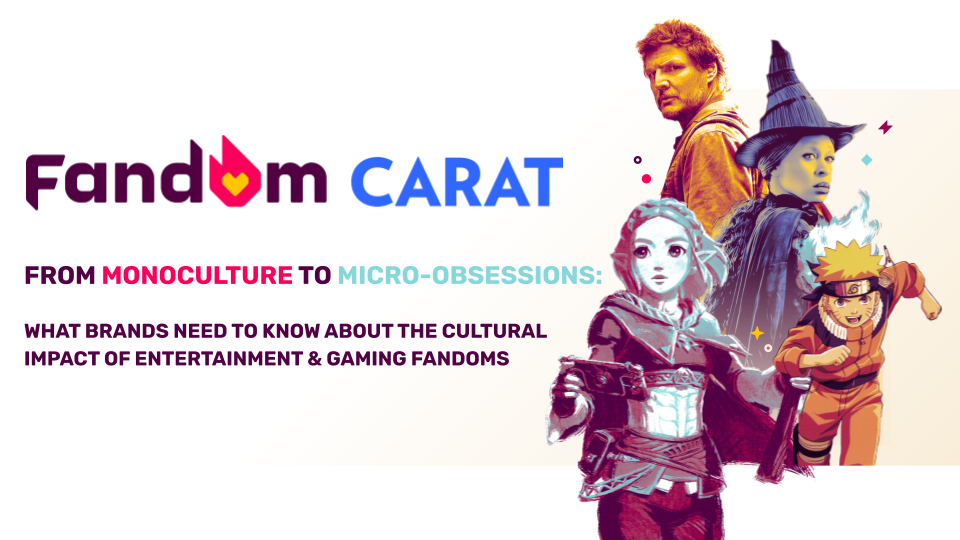Study Finds 87% of Consumers Participate in Activities Tied to Their Fandoms, Offering Opportunity for Marketers to Engage
NEW YORK, NY (Sept 25, 2025) — Today, Carat US and Fandom, the world’s largest fan platform and the #1 Gen Z destination across entertainment and gaming, revealed new insights into fan behavior, what fuels it, and how brands can harness its power. As consumers spend more and more of their time engaged in fandoms, the opportunities for advertisers to connect with these sought after audiences are at an all-time high. This study leverages Fandom’s deep bench of first-party data providing an unmatched POV into the gaming and entertainment landscape that can better power Carat’s Cultural EQ Measure, which identifies the cultural levers that move people and helps brands build experiences that activate against them.
By examining how external innovation is reshaping consumer behavior across mass, mid-tier, and niche fandoms, the research reveals the deep cultural influence of entertainment and gaming communities - offering brands actionable insights to meaningfully connect with these audiences and fuel how brands align with pop culture.

The Fandom-First Movement is Here:
● Fandoms have shifted from passive to participatory, with 87% of fans participating in activities surrounding their fandoms
● 75% of fans report that engaging in fan culture is just as fun as, if not more fun than, engaging with the content itself.
● Cultural moments are built on the interplay between content & audience – 34% of time spent in entertainment & gaming fandoms is spent with mass moments, 32% with mid-tier moments, and 34% with micro moments.
● 50% of Gen Z now create content surrounding their fandoms – up 10% vs. 2019

Understanding the Right Moments to Engage with Fans:
Study depicts three moments that fans engage with:
● Mass moments represent 34% of time spent with entertainment & gaming
o What this means: these are fandoms that people regularly engage with due to its dedicated fanbase, but when new content is released, it brings in a mass audience
● Mid-tier moments represent 32% of time spent with entertainment & gaming
o What this means: There is a window of time where these fandoms are at the direct epicenter of pop culture but once the moment is over, interest declines
● Micro moments represent 34% of time spent with entertainment & gaming
o What this means: While these fandoms have a fierce fanbase that engages regularly, there is only a slight uptick in fan interest when something is released, typically never reaching a notable level of cultural relevance
o That being said, Gen Z is +27% more likely to lean into these micro moments, consistent with younger generations using subcultures to find identity and fuel connections
This research follows the recent announcement of dentsu’s expanded global Sports and Entertainment offering to become the world’s only fully integrated, global network, bringing brands closer to fans, at the intersection of culture and commerce. Led by industry insiders and powered by proprietary fan data, clients can take advantage of the full range of culture-defining content opportunities to extend brand and commercial power, without compromise.
“At Carat, we believe culture is a powerful currency for brands,” said Joanna Hawkes, Head of Strategy at Carat. “In today’s algorithm-driven media landscape, decoding cultural signals, conversations, and communities is essential to creating breakthrough brand experiences. As fan communities grow in influence, this research with Fandom enables us to tap into fan communities in meaningful ways that build relevance and resonance.”
“As the world’s largest destination for entertainment and gaming fans, Fandom brings unmatched first-hand knowledge of fan behaviors, passions, and trends” says Bethany Eppner, VP of Global Business Marketing at Fandom. “Together with Carat, we’re empowering brands to align with culture in meaningful ways - leveraging our real-time data into viral and evergreen fan moments to ensure advertisers can authentically connect with audiences in the ever-changing world of fandom.”
This report draws on survey data from 1,500 U.S. entertainment and gaming fans across the Fandom platform, alongside behavioral insights gleaned from 250,000 fan-curated wiki communities on Fandom, providing a blueprint for how bands can align with fan culture. The opportunities to seamlessly integrate fan-related content into media plans are continually evolving, from licensing IP for bespoke campaigns and products, to branded content integrations, to tapping into community-based platforms to become part of fandom conversations, and more.


